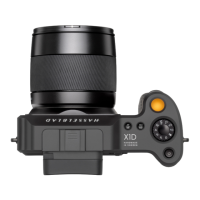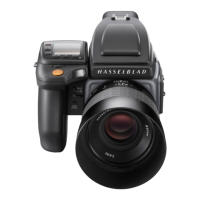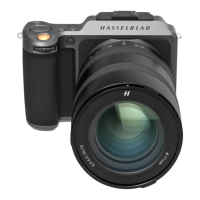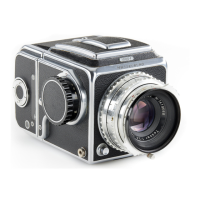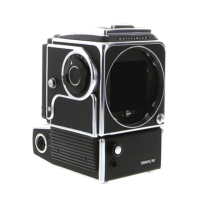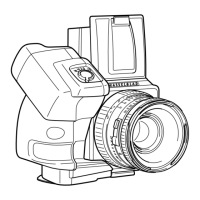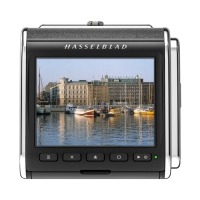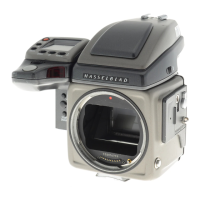7
HASSELBLAD CAPTURE FILES, PHOCUS & ADOBE/APPLE SOFTWARE WORKFLOWS
The CFV 50c captures files and stores them as Hasselblad RAW format files or Hasselblad RAW + JPEG formats simultane-
ously. Lossless compression is applied so the actual size of each capture can vary.
Hasselblad RAW files are initially stored in the 3FR format which is a proprietary Hasselblad format for the temporary storage
of captures. A 3FR file contains the complete digitized raw image exactly as it was captured by the camera. 3FR information
requires further computing power (typically by way of Phocus) to obtain complete development. If processed in Phocus, 3FR
files become Hasselblad 3F files – denoted by each file now bearing the suffix “.fff”. If processed by other RAW processors, the
3FR files are not converted to 3F but can be exported directly to TIFF, PSD etc according to requirements.
However, when working tethered – which necessitates using Phocus – 3FR files are automatically processed and stored in
the background on a computer appearing as 3F files on the hard disk ready for selective adjustment and export. 3FR files
stored on a CF card can be processed to completion using:
• Hasselblad Phocus (included)
• Adobe Camera Raw / Lightroom (included)
• Apple Aperture
To sum up, capture files can be stored as 3FR files (on a CF card) for later processing in Phocus or other software, or they can
be stored as 3F files (as a result of tethered shooting or 3FR files processed and imported to Phocus). In all cases if you keep
the original 3FR/3F files, you will also retain the possibility of reprocessing them in the future in later versions of Phocus or
other software to take advantage of eventual improvements and developments.
Note that using Phocus is the most comprehensive method. The Phocus and Adobe methods can produce almost identical
results (V lens corrections, DAC, is not available with Adobe) regarding RAW conversion so it is a matter of personal choice
regarding which method would best suit your preferred ways of working. Alternatively you can use Apple Aperture though
you should take note that the benefits of DAC and HNCS etc, will be lost in this case.
Mixed formats
Phocus can also process most other capture formats, generic and proprietary. This means you can include other formats in
your normal Phocus workflow if you choose. Or if you prefer, you can include Hasselblad files in Adobe / Apple workflows
as stated above.
.nef
.dng
.cr2
.tiff
.mos
.jpeg
etc.
3FR
JPEG
CAPTURE DESTINATION
The capture destination is the location to which new captures are saved and from which you can browse. Choice is normally
automatic but a manual selection is also possible in some cases:
• When untethered, a compact-flash card is automatically selected.
• When tethered, captures are automatically saved directly to the computer hard disk. See Phocus user manual about
how to select or create a new storage folder.
TIFF
JPEG
PSD
DNG
etc.

